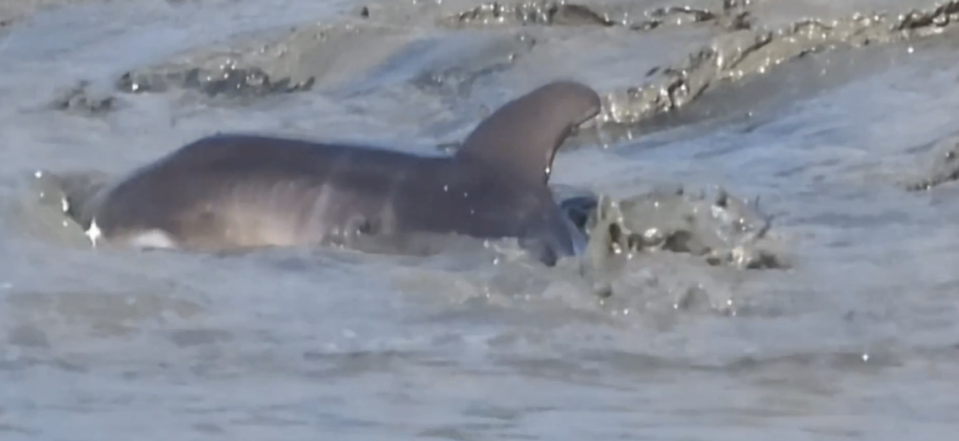Watch video of a baby dolphin living its best life by SC beach. Here’s what it’s doing
Have you ever heard of strand feeding?
This baby dolphin is learning the ropes.
Last summer, in the early afternoon, Bluffton resident Chris Short, age 54, captured a video of a baby dolphin, thought to only be a few weeks old, learning how to strand feed from its elders off of Bull Creek near Daufuskie Island.
The video depicts Short, who has his captain’s license and was leading a boat tour for a company out of Broad Creek at the time, following the pod of dolphins from a safe distance as the marine mammals engage in the hunting practice while on a boat tour.
Strand feeding is a solely local occurrence and only happens in the Lowcountry region of South Carolina and in some parts of Georgia. This is because the learned tactic only takes place in tidal creeks and marshes along exposed mud banks.
Along with organized planning that needs to take place to make the hunt successful, dolphins also have to be careful to avoid any nearby oyster beds as they can be razor sharp.
This behavior takes place year round, during both day and night, with September and October being particularly active months, detailed the South Carolina Department of Natural Resources.
The strategic form of hunting involves teamwork, communication and timing and generally takes place during low tide.
Partaking in the practice during a rising low tide is beneficial in case a dolphin goes too far and gets stuck. The rising tide will save them, detailed Short.
The nearby shorebirds that can be seen in the video also seem to be waiting patiently for the dolphins to finish their meal. This is because when the dolphins are finished, the shorebirds will eat up the remaining leftovers.
Strand feeding is an ambush hunting technique where small groups of dolphins, typically between two to six dolphins, will herd groups of bait fish such as mullet tightly together into a “bait ball.” They will then form a line and accelerate to create a bow wave that forces their prey onto shore as they follow close behind and surge out of the water together, nearly stranding themselves to feed.
The practice of strand feeding is a learned behavior among local dolphin populations, and not all of them know how to do it. During the summer, local waters get a “lot of migratory dolphins;” however, they don’t know how to do this ambush tactic, said Short. In a sense, the tradition is passed down through the generations.
Short knew the given location was popular among local dolphin populations when the “tide was right” and observed when the best time of day seemed to be, noting that the same group of dolphins, complete with the featured baby dolphin, could be found in the area for several days following the video’s encounter.
At the time, this was about his eighth or ninth time seeing the strand feeding process.
The baby dolphin, called a calf, that is pictured in the video, was estimated to only be a few weeks old at the time.
When the calves are born, they are born with what are called fetal folds, which are the vertical ‘stripes’ you can see in the video.

Typically, these folds can be seen on very young dolphins as they are a product of being curled up in their mother’s womb where they are “curled up like a shrimp,” said Short.
In addition, aside from seeing these folds on younger newborn calves, the estimation of his age is also due to the fact that “he was just really small.”
Although the video shows the little newborn calf appearing to get stuck, it was only brief as he quickly freed himself and continued to learn the generational craft.

